The plant world has numerous, amazing examples of resilience. Cycads, for example, are fascinating ancient plants thought to have evolved from ferns. Having been around for nearly 300 million years, they are models of longevity and hardiness.
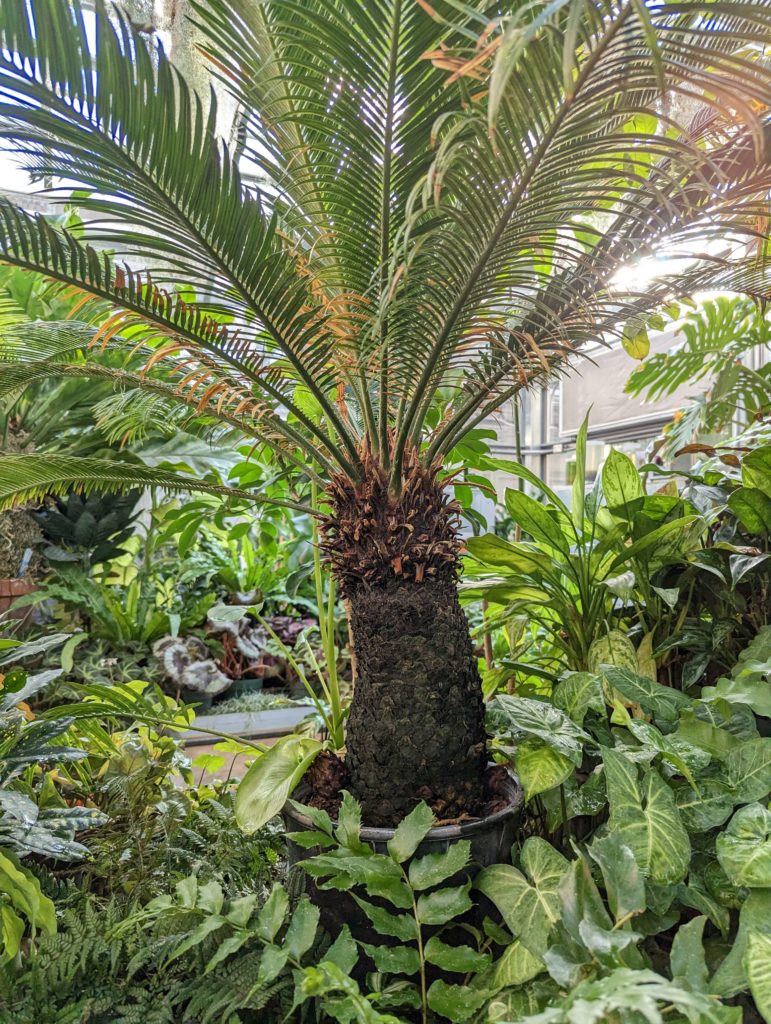
What are cycads? Think dinosaurs and the Jurassic period, which was so dominated by cycads that it is sometimes referred to as the Age of the Cycads. They are among our oldest plants and precede the flowering plants. Their former preeminence is indicated by the wide distribution of cycad fossils on every continent, even places that would now be inhospitable to them such as Antarctica. This is one piece of evidence we have that the globe was formerly more hot and humid, given the preference of cycads for tropical environments.
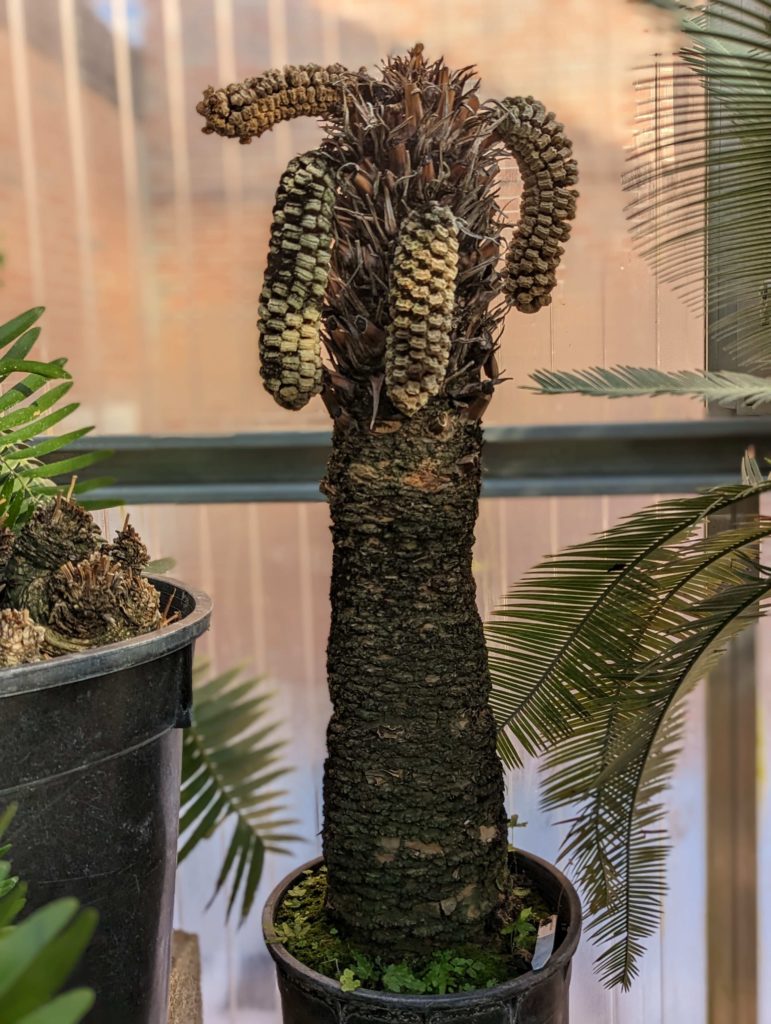
Despite their previous eminence, however, today they are living fossils as other more evolved plants such as the flowering plants have come to take their place. These days, they survive only in small, scattered populations in tropical and subtropical environments, most of them in biodiversity hotspots like Australia, Mexico, and South Africa. They live a long time, on the order of hundreds of years. However, most species are threatened in their natural environments, often due to habitat loss and overharvesting.
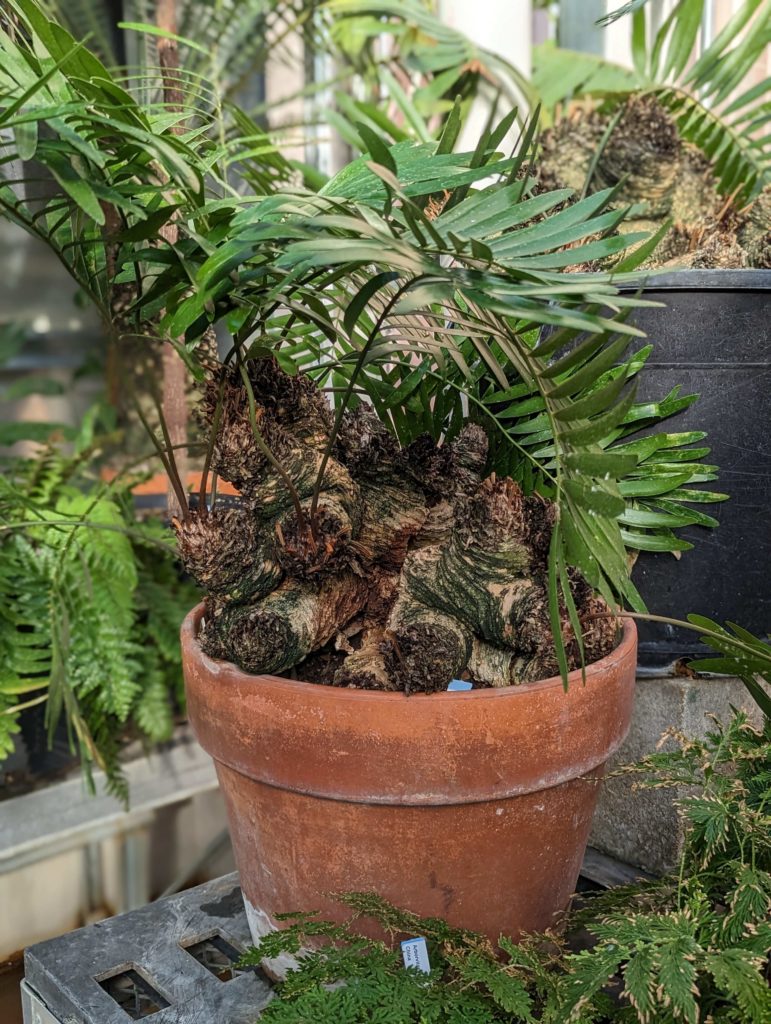
Their endangered status has conversely led to their increase in popularity among houseplant collectors. Cycads are well-suited as landscape plants or houseplants depending on variety; in fact, they are superior to palm trees because they are smaller and grow much more slowly. Unfortunately, some of this newfound interest has contributed to their further decline in the natural environment due to illegal harvesting of wild cycad plants.
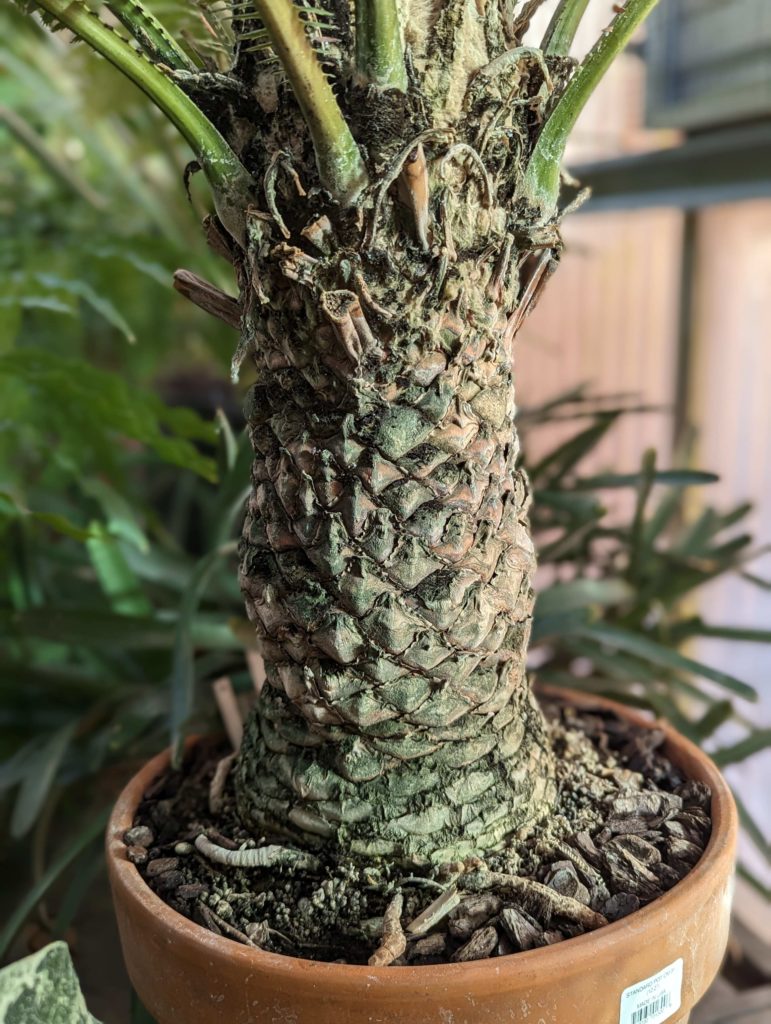
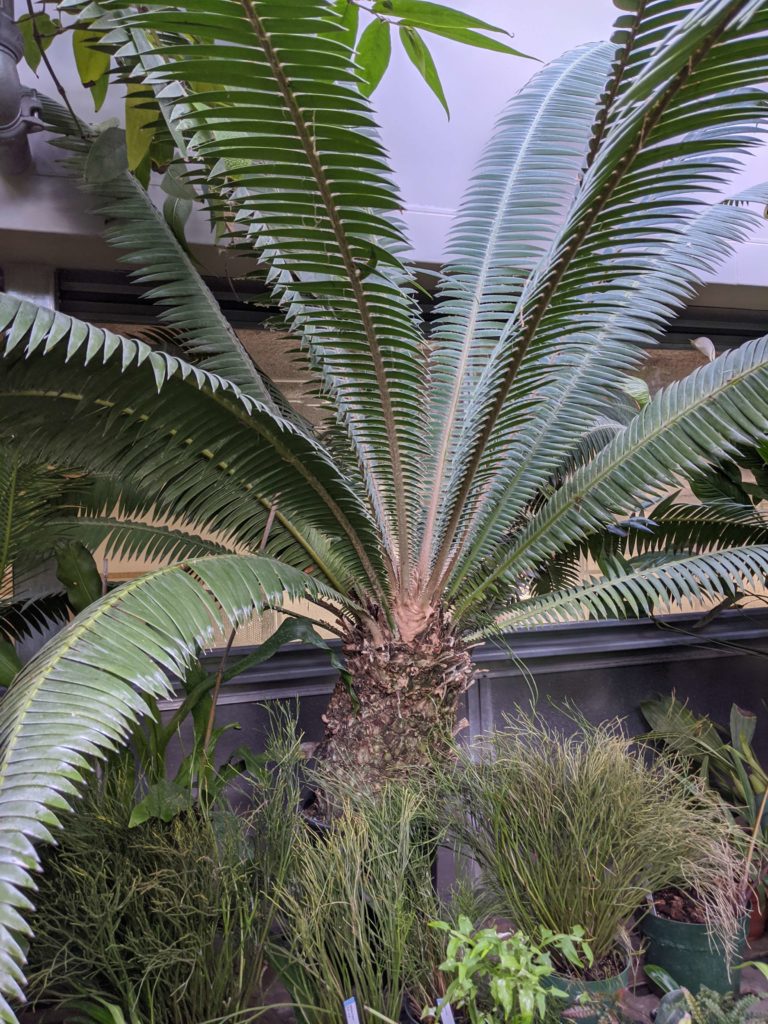
Many plants have both male and female reproductive parts on the same plant, but for cycads, the reproductive parts are on separate male and female plants, a trait referred to as dioecious. Moreover, cycad reproductive parts take the form of cones, a feature common to gymnosperms like pine and spruce trees. Cycads are also the only gymnosperms that fix nitrogen in their roots. They reproduce very infrequently, a characteristic that compounds their continuing decline and extinction.
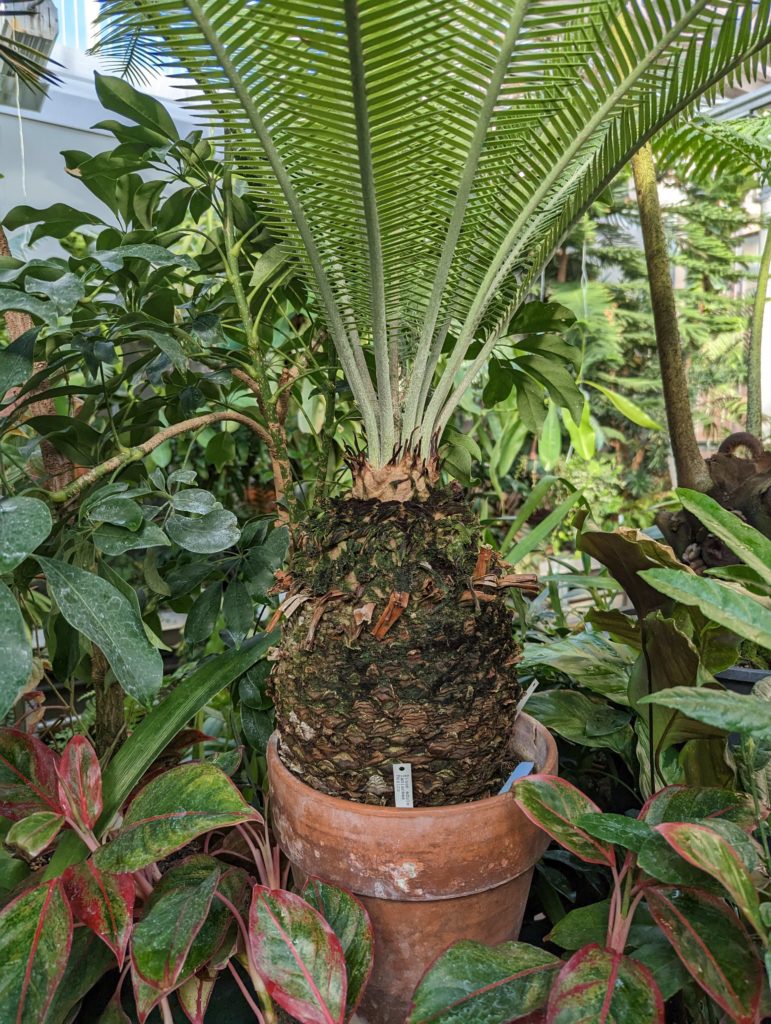
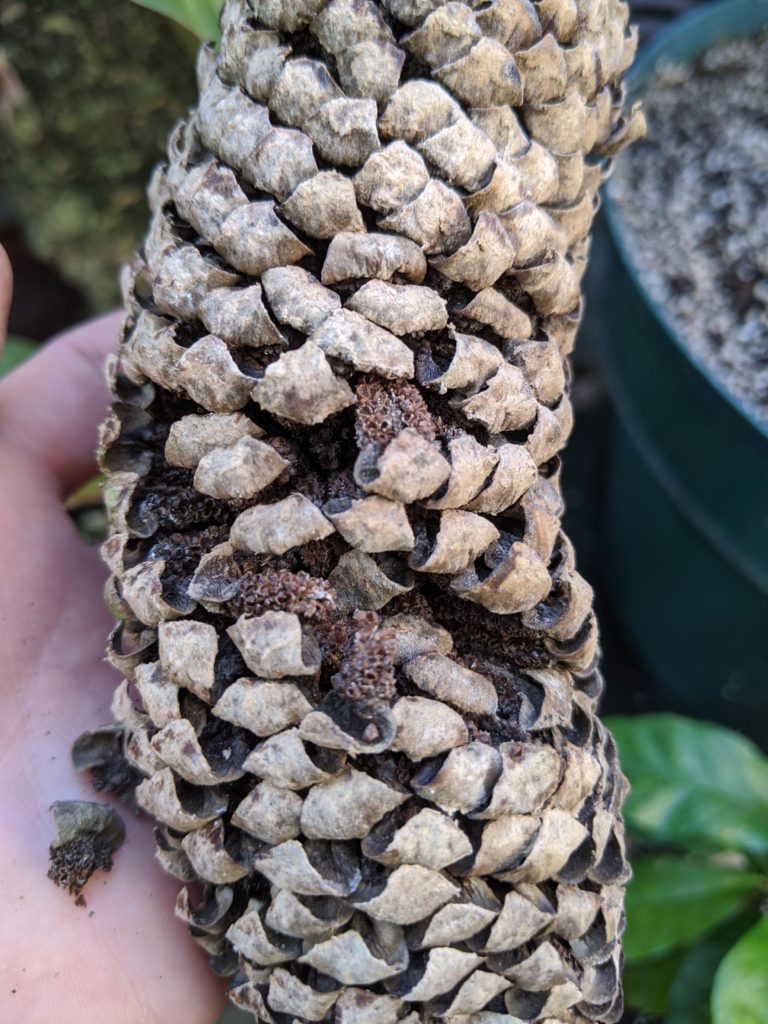
The cycads that form symbiotic relationships with fungi in the soil have branching, coral-like roots that are home to colonies of cyanobacteria that take up and fix atmospheric nitrogen, just like legumes. This allows them to survive even in poor soil environments because they and their symbiotic partners are transforming nutrients from the air.

Although they aren’t a major economic plant, cycads have been used by humans for thousands of years for edible, medicinal, and ornamental purposes. The seeds and stems provide starch that can be formed into bakery products like bread, biscuits, and flatbreads as well as a thick pudding or porridge accompanied by meat and vegetables. Charred remains of cycad seeds have been found in caves in Australia that were inhabited by indigenous people over 5,000 years ago. Native Americans from Florida, mainly the Seminole, used the once-abundant cycad Zamia integrifolia for its edible starch for hundreds of years, and early settlers even set up mills to extract the seeds’ and stems’ abundant starch content, which was sold elsewhere as “arrowroot” flour even though this is a different plant. The last cycad starch mill closed in the early 20th century as the Zamia cycad population declined and urbanization and human population increased.

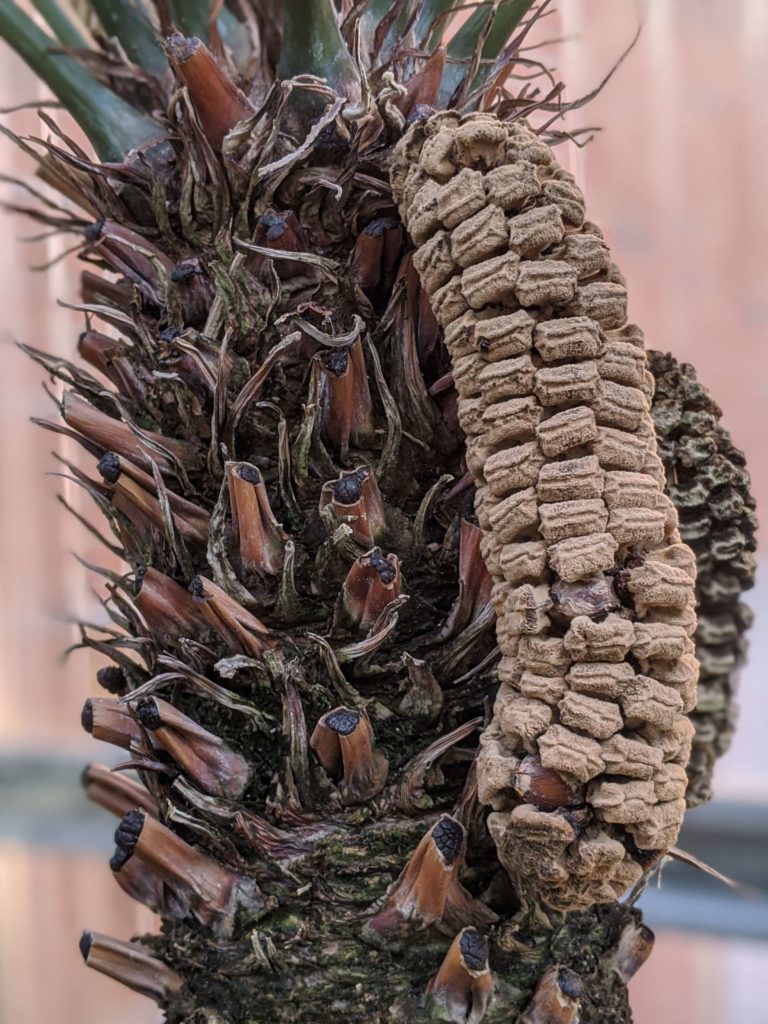

Despite all these uses, cycads are toxic to humans and animals if ingested in large enough quantities. Many cycad poisoning incidents have been recorded around the world, and remarkably similar processes for leaching and removing the toxins have been recorded as well. The removal of toxins usually involves several rounds of leaching (soaking in and changing water), drying, or some combination thereof.

Cycads have also been featured in ornamentation in the form of leaf décor for shrines, religious holidays/festivals, and to mark gravesites; jewelry; and floral arrangements or wreaths. They also feature as the subjects of Japanese and other art traditions.
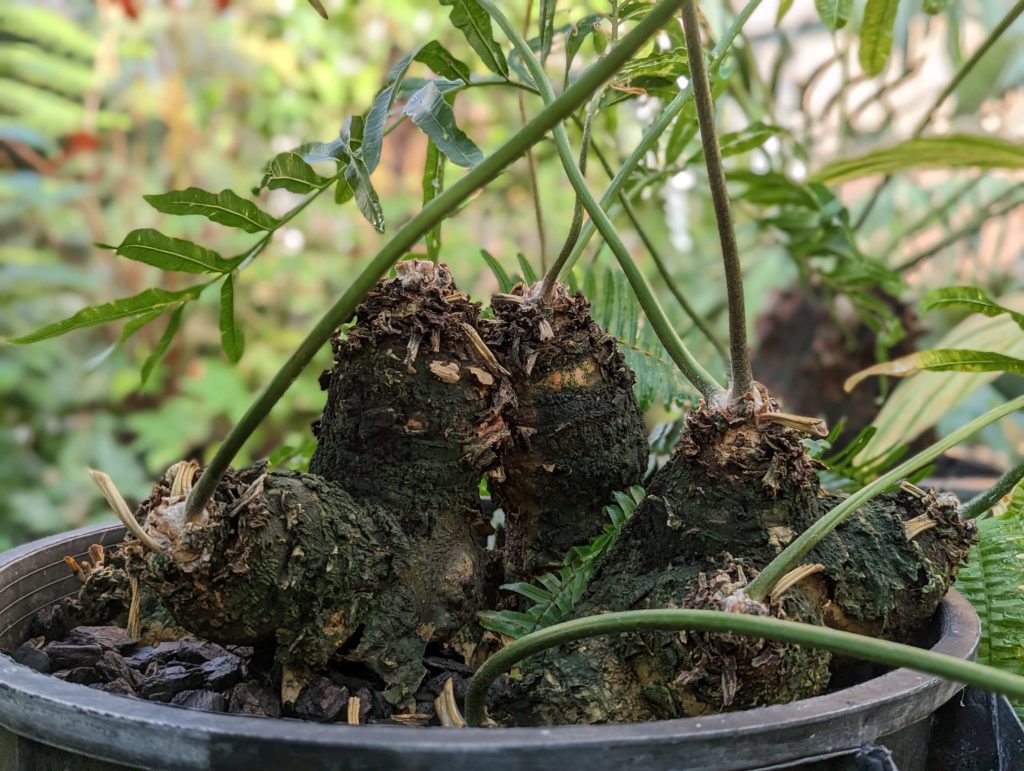
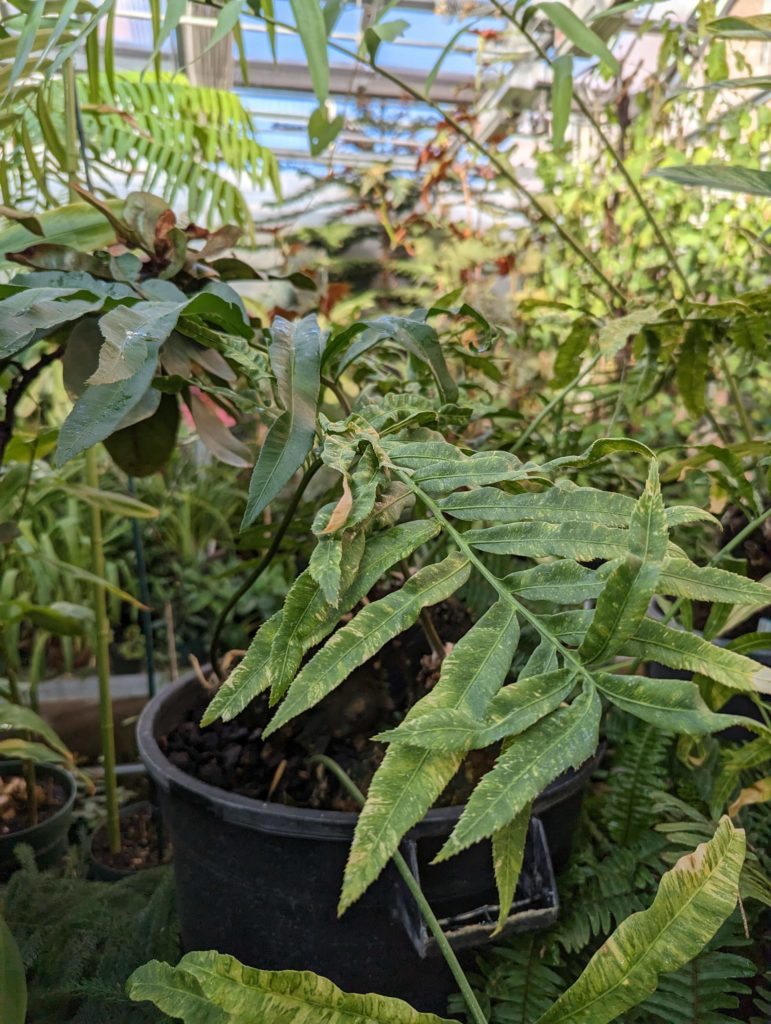
References
Mahr, S. (n.d.) Cycads. Retrieved from https://hort.extension.wisc.edu/articles/cycads/
Whitelock, L. M. (2022). The cycads. Timber Press.


